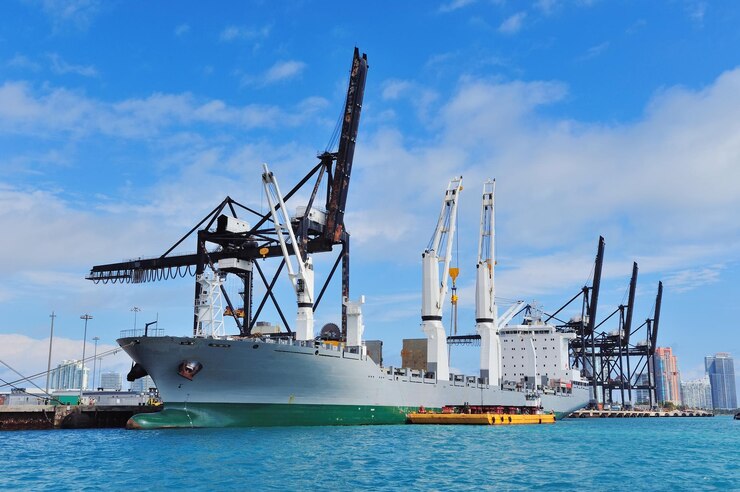Boats cannot be in the water all the time. You have to get them out to clean them, scrape the barnacles, repaint them, and inspect them for any signs of water damage. Moreover, while they are made from materials that are resistant to saltwater, these boats are also susceptible to this kind of damage. With a lift, you’ll be able to get them out of the water when they’re not in use and, this way, protect them.
For this, you need a boat lift, and one of the best types is the hydraulic boat lift. Here are some pros and cons.
Pro: Easy to operate
Boat lifts, in general, are pretty easy to operate. They’re typically quite user-friendly and don’t have too many settings. You just push a button on your remote controller to lift the boat and push another button to lower it.
While this may not sound like a massive deal to you, many people are genuinely terrified of mastering the use of a hydraulic boat lift. Others fear that if the commands are too complex, they might damage their expensive boat. With hydraulic boat lifts, the risks of any of this happening are significantly lower.
They operate on a hydraulic principle, so you don’t have to operate them manually, which means that they’re not tiresome and don’t require physical strength or labor.
According to veteran retailers of hydraulic boat lifts in Minnesota, it’s also important to mention that these boat lifts run very smoothly and operate quietly. This means that they’re not disruptive in any way. You can just start them and stand by, potentially even chatting, while the crank and lever do their thing on their own.
Con: Cost
There’s no way to tiptoe around this – hydraulic boat lifts are more expensive than their conventional counterparts. Sure, there’s a justification for this price, seeing as how they’re more complex, larger, have a larger carrying capacity, and are sturdier, but if we’re not talking about the cost-to-dollar ratio but if it’s just outright cost that we’re referring to, hydraulic lifts are not cheap.
Still, there are a few different angles you can look at this, as well.
First of all, you need to take a look at the alternatives. A manually operated lift won’t always be an option. Sometimes, the boat will just be too heavy or have too formidable dimensions to operate this way. So, you’ll have to go with a hydraulic lift, and every suitable alternative will be just as expensive.
At the same time, you’re already buying a boat, which is a massive investment, and you want the safest lift there to ensure that it doesn’t get damaged.
Lastly, it’s a one-time purchase, so even if it’s a tad more expensive, it’s fine.
Pro: Power, speed, and reliability
A lot of people downplay the importance of finding the right lift because they forget why they need the lift, to begin with.
First of all, a lift is there to help you get the boat out of the water so that you can protect it from saltwater damage, repair it, and inspect it. If you believe that the boat lift is expensive, try to calculate what it would cost you to fix all the damage caused by your boat staying in the water all year round (if this was even viable, to begin with).
Then, you need to understand the anxiety that goes into extracting the boat from the water and lowering it back down. You understand that your boat (one of your most valued possessions) is hanging up in the air and that it could get damaged at any time. A hydraulic lift is sturdy and strong. Most importantly, it’s quick, which means that your ordeal will be over in a matter of seconds.
Power, speed, and reliability are hard to quantify, but they do contribute value to your investment.
Con: More difficulty in maintenance
Hydraulic lifts are not that complex, but they’re still more complicated than manual and smaller boat lifts. This means that their mechanism is more complex and, therefore, harder to repair if it does get broken. Other than this, it also means that there are more parts to improve, replace, and lube up. Overall, the maintenance becomes more difficult.
The repairs will also be more complex and will require specialized knowledge and professional services. Most of the time, you won’t be able to fix things on your own. This means that you’ll have to pay for an expensive repair, but it also means that you’ll have to rely on others to make the repair.
This type of lift is also dependent on power, which means that if there’s a problem on the grid, you’ll have to find an electrician to fix a problem. Again, it’s not an issue that you can handle on your own. Not to mention that the list itself will not be viable if there’s no electricity nearby.
Pro: Flexibility in installation
Hydraulic lifts are sturdy and flexible structures that you can install wherever you want. They’re not restricted to deep or shallow waters, and they can be customized to fit different dock configurations. It doesn’t matter if you’re going on a sea voyage or taking an Amazon rainforest trip, you still need a boat lift.
They also come in different shapes, sizes, and carrying capacities. In other words, it really doesn’t matter what kind of boat you have. Sure, getting a hydraulic lift for a pontoon boat might be a bit of an overkill, but for anything larger than that, it’s always a good idea.
Also, keep in mind that the more you’re using it, the more value you’re getting. Every time you extract the boat quicker, you save time. Every time you don’t have to extract it manually, you’re saving labor. The effort that you save is really cumulative and this is a concept whose value is so easy to downplay.
Wrap up
Hydraulic boat lifts are among the best and most powerful lifts on the market. They’re amazing, effective, and reliable. However, they’re also expensive and difficult to install and maintain. Are they worth it? Well, it depends on what you want, what you need, and where your priorities lie. Now that you know the good and the bad, you’ll be able to tell for yourself whether they’re worth it.




0 Comments